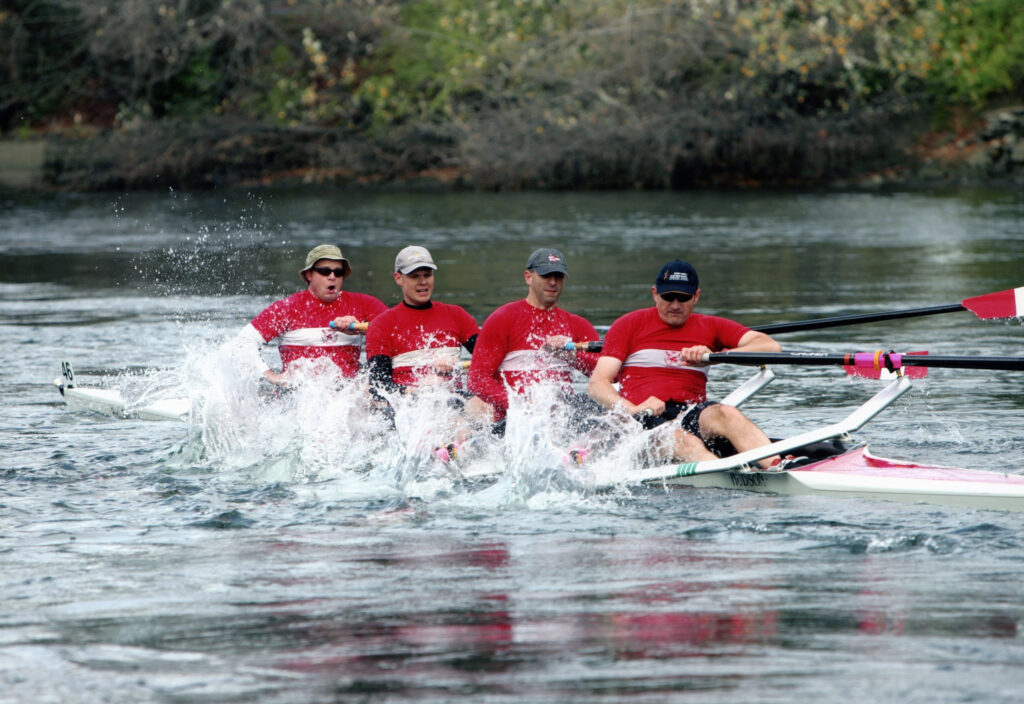
Summary
- The most common rowing injuries involve the back.
- Seek prompt treatment of injury. Early management will mean less time away from rowing.
- Do not resume activity until you have completely recovered from injury.
On this page
- Common injuries when rowing
- Risk factors for rowing injuries
- General health tips when rowing
- General safety suggestions for rowing
- Take care of your back when rowing
- What to do if you injure yourself rowing
- Where to get help
- Things to remember
Rowing is a fun way to get fit. It also allows you to enjoy the beauty of Victoria’s rivers and lakes. The physical skills you need include stamina, strength, balance, timing and technique. You could have the occasional family outing that includes a picnic and a leisurely rowboat ride down the river, or you could join a rowing club if you’re serious about the sport.
There are different categories of rowing that can accommodate men, women and children. Contact Rowing Victoria for more information
Common injuries when rowing
Common rowing injuries include:
- lower back pain – the most common rowing injury. The constant bending back and forth that is required when you row can injure the lower back
- upper back pain – including pain and tenderness in the muscles of the shoulder, neck and upper back
- knee pain – such as pain felt beneath the knee cap, or pain when the knee joint is moved
- wrist tendonitis – symptoms include pain and swelling
- blisters – on the hands
- rib stress fractures – these injuries only tend to occur in elite athletes who are training all the time. The muscles repeatedly pull on the rib causing stress fractures.
Risk factors for rowing injuries
Some of the factors that can increase your risk of injury include:
- bad technique – for example, not sitting correctly in the boat, or using an uncoordinated rowing motion
- prior injuries – which rowing can exacerbate, such as those of the back, wrist and knee
- lack of fitness – an unfit person with undefined or inflexible muscles, poor posture and weak abdominal muscles is much more likely to get injured while rowing
- time spent rowing – a beginner to the sport is more likely to incur injuries because their bodies aren’t used to rowing. On the other hand, a person who trains all the time is at high risk of overuse injuries.
General health tips when rowing
Suggestions include:
- Maintain a good level of general health and fitness.
- Be sure to warm up thoroughly. Include sustained stretches in your warm up routine.
- Be sun smart. Cover up with clothing, wear a hat and sunglasses, and apply 30+ sunscreen to all exposed areas of skin.
- Wear several layers of clothing so that you can remove layers as you heat up.
- Avoid rowing in the hottest part of the day, particularly in summer.
- Take plenty of drinks with you. Drink water before, during and after rowing.
- Allow sufficient time to cool down afterwards. Stretching is an important part of your cool down routine.
General safety suggestions for rowing
Suggestions include:
- Take lessons to learn the skills and technique required for rowing.
- Make sure that all rowers, including you, can swim.
- Don’t go rowing by yourself.
- Don’t try to row against traffic – go with the flow.
- Don’t go rowing in stormy weather. If you feel doubtful about the weather conditions, be cautious and don’t go on the water.
- Take a mobile phone in case of emergency.
- If the boat fills with water and swamps, stay with it. Wave your arms to attract attention.
Take care of your back when rowing
The most common rowing injuries involve the back. Suggestions to prevent injuries include:
- Undertake a general strength and fitness program including weight training and aerobic activity, such as walking or jogging, to improve muscle strength, flexibility and endurance.
- Strengthen abdominal muscles to support the lower back.
- Perform regular flexibility exercises for your back. Tight back muscles are more susceptible to injury.
- Respect your limitations and don’t overexert yourself when rowing. Back injuries are more likely to occur when you’re fatigued.
- Make sure you pay attention to your rowing technique. Seek advice from a rowing coach on ways to improve your motion.
- Don’t overtrain. Aim to gradually increase your strength and stamina over a period of time.
- Look after your back in everyday life, for example, lift heavy objects correctly.
What to do if you injure yourself rowing
Suggestions include:
- Stop immediately if an injury occurs to help prevent further damage. Rowing through the pain will only aggravate the injury.
- Seek prompt treatment of injury. Early management will mean less time away from rowing.
- Treat all soft tissue injures (ligament sprains, muscle strains, bumps and bruises) with the RICER approach: Rest, Ice, Compression, Elevation (raise the limb above your heart) and Referral – seek advice from a health professional.
- Do not resume activity until you have completely recovered from injury.
- Watch your technique. It is important to pinpoint the cause of your injury, so you can take steps to address the problem. Taking lessons to improve your technique may help.
Where to get help
- Your Chiropractor
- Physical Therapist
- Rowing club
- Rowing coach
Things to remember
- The most common rowing injuries involve the back.
- Seek prompt treatment of injury. Early management will mean less time away from rowing.
- Do not resume activity until you have completely recovered from injury.





